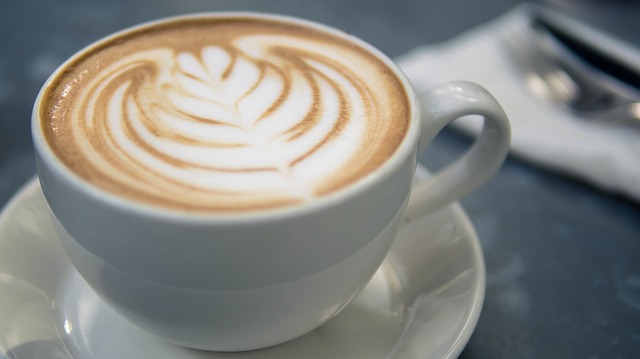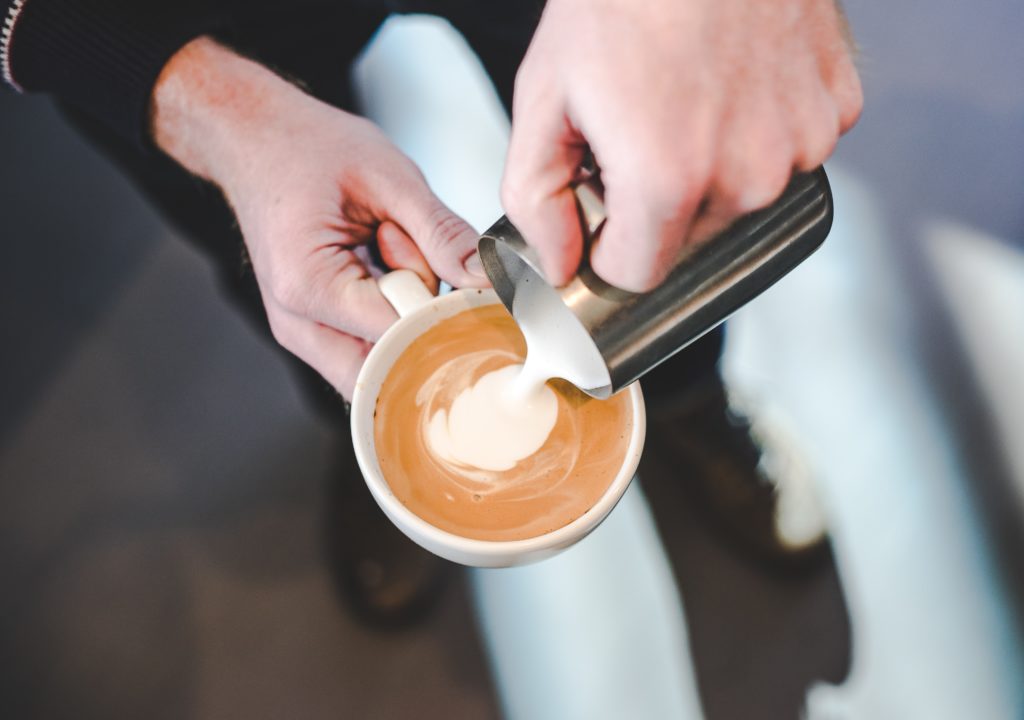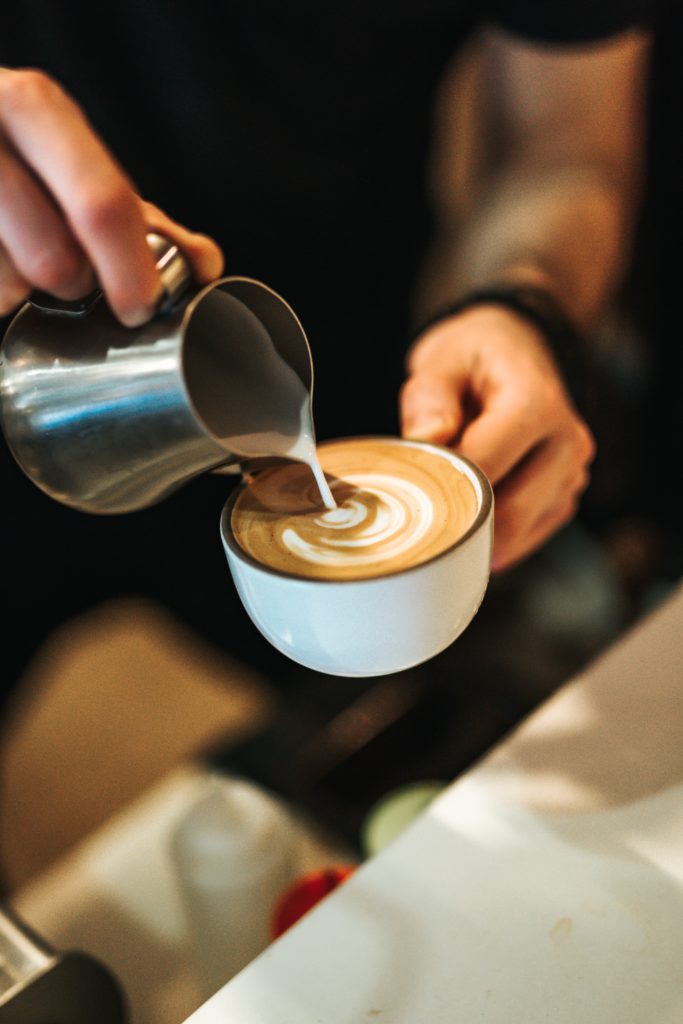The ratio of milk to coffee for a cappuccino will depend on the size cup that you will be using. The important ratio is instead the milk to foam ratio. You want the milk to foam ratio to be 50/50. The smaller the cup the more the espresso flavor will shine through.
What makes a good cappuccino

The whole base of a cappuccino is milk foam. You want to make sure that you steam the milk well. This will take a few tries to get down but once you learn it you won’t need to leave the house for a great cup of coffee.
When enjoying this creamy cup of coffee, you will want to drink it right away. That is not to say you need to chug the cap. I do recommend that once you pour the milk you be ready to enjoy it. If you are having this drink with breakfast or a snack, have that all ready to go. The milk will begin to separate and will end up foam sitting on top of coffee/milk. That basically makes it an extra foam late. There is a stirring method that can recombine the milk and foam to an extent. I will cover that in the next section.
How to steam
This is arguable the most important part of making a cappuccino. When steaming the milk you want to make sure that you leave yourself room for the foam to expand. Most home steam wands are on the smaller side, so you will want to fill the milk pitcher up enough that the tip of the steam wand can be submerged into the milk.
Once the steam wand on, you will want to hold the pitcher at an angle with the steam wand just off-center. This will help the milk to swirl. As the milk swirls it will begin to expand. Lower the milk pitcher slowly to keep the tip of the steam wand just under the surface of the milk. The less sound the milk is making the smoother the foam will be.
When steaming milk, you will want to get the milk up to about 165deg F or about 74c. The most ideal way to do this is with a thermometer. Once you stop the steam wand, the temperature may still climb a bit. You will have to get a feel for your machine. Alternatively, this can be done by touch as well. When I stream milk, I steam it until I cannot keep my fingers on the outside edge of the pitcher. That will normally put my milk above 160f (71c).
The reason you do not want to go much hotter then this is because you will start to burn the milk sugars. Granted this can add a bit of a different flavor but you will have to wait longer for it to cool down. The longer you wait to drink a cappuccino, the more the milk and foam will be separated.
Wet vs dry Cappuccino

Wet and Dry are terms that are referring to the style of cappuccinos. Basically it is the modification of that 50/50 milk to foam ratio I spoke up above. The more milk you have the ‘wetter’ that drink will be and the more foam, the drier. Too much milk and you’ll have a late, too much foam and you’ll need a spoon to get it all out.
When steaming the milk for wet or dry cappuccinos, you will have to use slightly different tactics on each.
For dry cappuccinos, you will need a lot of foam ( depending on the size cup that you want to fill). To do this you will want to keep the steam wand just under the surface of the water and keep lowing the container you are steaming in. Basically, you will be teasing more air into the milk and get more volume in the foam. Since the foam is dry, you will have to use a spoon to scoop the foam onto the espresso while pouring the steamed milk in.

For wet cappuccinos, you will keep the tip just under the surface, but you will let the milk rise on its own. This will make a creamer foam. This sort of milk/foam can be free poured onto the cappuccino without needing a spoon.
Why wet or dry? For me, it is a matter of taste. The more milk you have in the late the more espresso flavor is masked. Whereas, if you have less milk you will taste the more complex flavors of the coffee. Having the ability to make this drink at home, you can play around with the milk-foam and coffee ratio until you find something you like best. All without spending $5 or so each time. Plus, milk steaming and cappuccinos are one of the more difficult drinks to make. These require practice to make consistently. Not all baristas have the time to practice. Most coffee shop environments require drinks to be made quick. With that, you may not always get a cappuccino the way you like it.
As I stated above, the amount of milk to espresso changes the overall flavor of the espresso. So a dry with a poorly pulled shot of espresso will be an assault on your taste buds. Wet cappuccinos and lattes are more forgiving.
Pulling the shot.

Depending on your espresso machine, this will take some trial and error to figure out. With high-end machines, there is a constant pressure that is set for the water. This means the water will flow through the ground coffee at the same speed no matter what. Some at-home machines might be slower or faster. The time for the coffee shops I have worked at is about 25 to 29 seconds for a double shot of espresso. This means I would have to grind the coffee a bit finer or more coarse depending on how the shots were pulling to achieve that time.
At home, you might not want to spend all that time dialing in the grind of the beans to make small changes. I recommend pulling a few shots at each setting on your grinder to see how it tastes. Each shot should be an ounce (30ml). See what tastes best to you. Once you dial that in, your espresso machine and grinder should not have to change.
